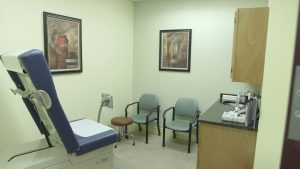Lithotripsy is a medical procedure involving the disintegration of kidney stones, gallstones and bezoars using high-energy shock waves. Once the procedure is done, small stone fragments (or gravel) come out through urine. The Extracorporeal Shock Wave Lithotripsy (ESWL), in which the shock waves are produced outside the body, is the most common type of lithotripsy.
10 Quick Facts About Lithotripsy
1. An ESWL is generally done when a stone is too big to move on its own, or when it becomes entrapped in the ureter (the tube carrying urine from the kidney to bladder) causing enormous pain.
2. ESWL is not done on people weighing over 300 lbs, individuals with skeletal deformities, persons with severe bleeding disorders, and pregnant women. Patients with cardiac pacemakers should undergo this treatment only after being approved by a cardiologist.
3. Prior to lithotripsy, a thorough physical examination is done, followed by an intravenous pyelogram (IVP) test to determine the size, location and number of stones.
4. Older individuals should first undergo an EKG (electrocardiogram) test to detect possible cardiac defects. Also, women of childbearing age should take a pregnancy test. Some patients will have a stent inserted into the ureter to allow the passage of gravel through urine.
5. The entire lithotripsy process takes nearly an hour to complete, during which time up to 8,000 shock waves are administered. This may cause some discomfort to the patient based on tolerance level. In most cases, a urologist administers analgesics to relieve the pain.
6. After the treatment, most patients see blood in their urine. This clears out within a week, and patients are advised to drink extra fluids during this period to promote the flushing out of any stone pieces from the urinary system.
7. Patients should pay a follow-up visit to the urologist two weeks after the treatment to ensure that everything is going as planned. This is also the time when the stents will be removed.
8. The potential risks of the procedure include mild temporary abdominal pain. However, severe or persistent pain could imply an unexpected injury.
9. Renal pain is common when gravel passes through the urine. In about 60% of cases, blood clots may form in the kidney area. Other possible complications are pancreatitis, nerve palsies and obstruction of the stone pieces.
10. Alternatives to lithotripsy involve surgery (although this process has become obsolete) and altering the urine’s pH to dissolve the stones. These treatments, however, have had limited success.






